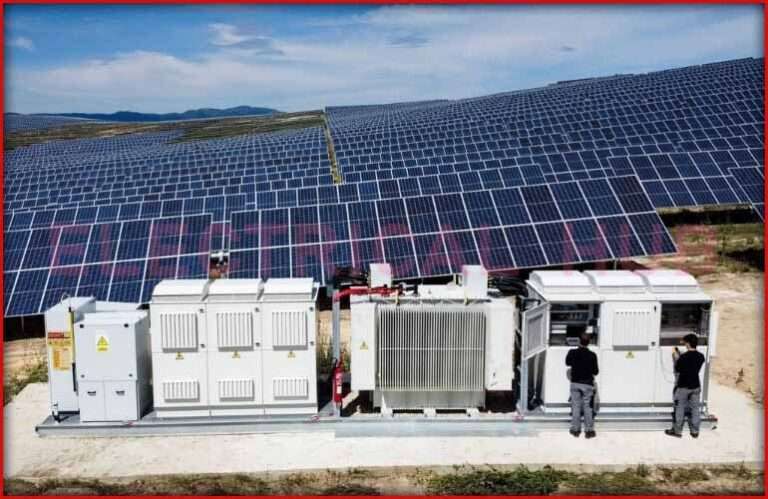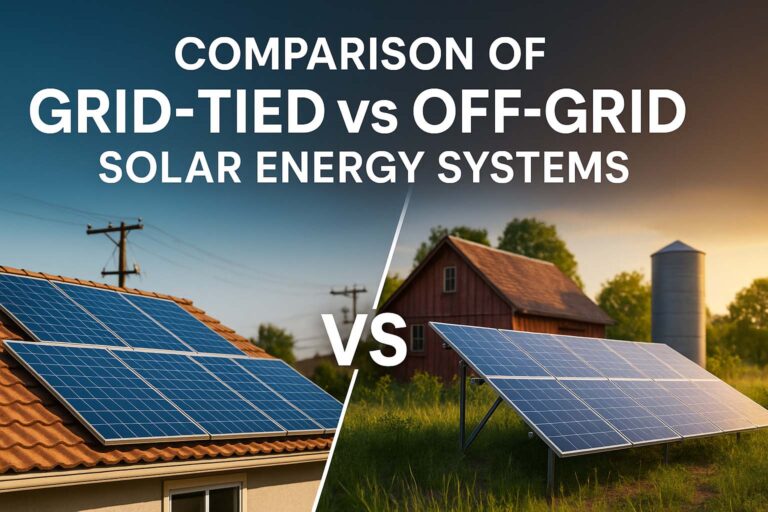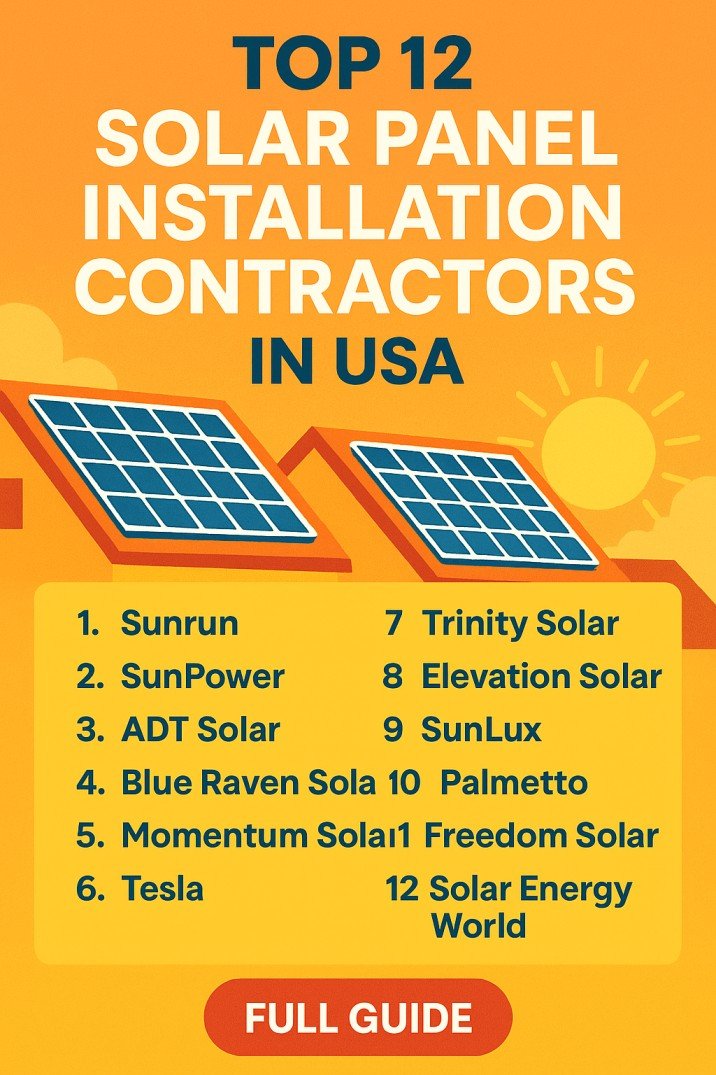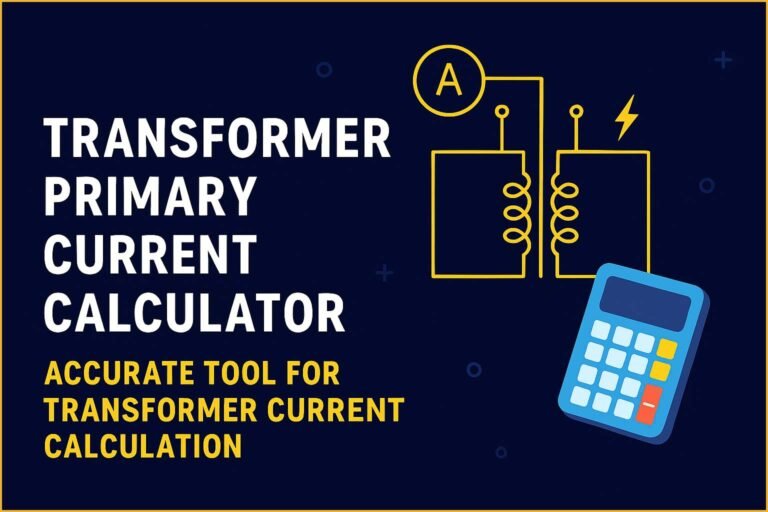How to Calculate Inverter Size for Your Home or Business
Choosing the right inverter size is critical for reliable power backup or smooth operation of solar systems. An undersized inverter will shut down when the load exceeds its capacity. An oversized one costs more and wastes resources. That is why learning how to calculate inverter size is essential for both homeowners and business owners.
The process is not complicated. But it needs accurate load estimation, understanding of the inverter sizing formula, and awareness of common pitfalls. Whether you are buying a home backup inverter or a commercial-grade system, correct sizing ensures stable performance and longer equipment life.
Table of Contents
Table of Contents
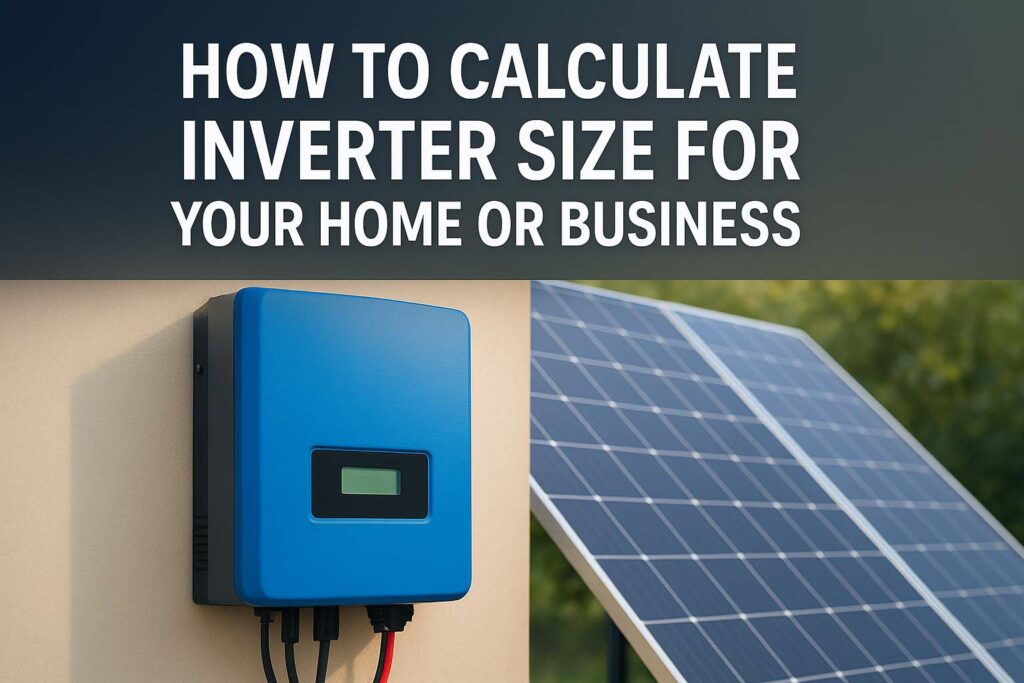
Inverter sizing depends on the total wattage of the appliances you plan to run. You also have to consider surge loads, efficiency losses, and the type of power supply. While manufacturers often provide size recommendations, doing your own calculation will help you verify if the proposed model truly meets your needs.
Key Takeaways
- Always calculate inverter size based on both running and starting watts.
- Use the inverter sizing formula to get precise values for your load.
- Factor in at least 20–30% extra capacity for safety and future expansion.
- Choose different sizing approaches for home and commercial setups.
- Avoid common mistakes such as ignoring surge loads or using inaccurate wattage data.
Step-by-Step Sizing Formula
The inverter sizing formula is the starting point for accurate selection. It combines the total wattage requirement and inverter efficiency to determine the correct size. Here’s the process:
1. List all appliances
Write down every device you want to run on the inverter. Include lights, fans, computers, fridges, pumps, or industrial equipment.
2. Find the power rating of each
Check the wattage label or use the formula:
Watts = Volts × Amps.
For example, a 220V appliance drawing 2.5A uses 550W.
3. Calculate total running watts
Add up the wattage of all devices that will run simultaneously.
Use our online tool Wire Size Calculator for Subpanels and Feeders – NEC Guidelines Included
4. Include starting or surge watts
Motors, compressors, and pumps require extra power when starting. This can be 2 to 3 times the running wattage. Use manufacturer specs or estimate based on appliance type.
5. Apply the inverter sizing formula
Inverter Size (Watts) = (Total Running Watts + Surge Watts) ÷ Inverter Efficiency.
Most inverters have around 90% efficiency, so divide by 0.9.
Example
If your total running watts are 1,800 and surge watts are 900:
(1,800 + 900) ÷ 0.9 = 3,000W inverter size.
6. Add safety margin
Add 20–30% extra capacity to allow for future load increases and prevent overloading.
This step-by-step process ensures your inverter can handle both continuous and peak demands.
Sizing for Home vs. Commercial Loads
Home inverter size calculation focuses on essential appliances. These typically include lights, fans, TV, computer, and small kitchen devices. Backup systems in homes rarely power all heavy appliances at once, so the load is often lower. For example, a typical household might have:
- 4 LED lights × 10W = 40W
- 3 ceiling fans × 75W = 225W
- 1 refrigerator (running) = 150W, (surge) = 450W
- 1 laptop = 60W
- 1 router = 10W
Running load = 485W, surge load = 450W, total = 935W.
Using the formula: 935 ÷ 0.9 ≈ 1,040W. Adding 25% margin = ~1,300W inverter size.
Commercial loads are different. They may include multiple computers, printers, air conditioners, pumps, or industrial tools. These devices have higher surge loads and often operate simultaneously. For example, a small business might have:
Use our online tool Free Electrical Wire Size Chart & Calculator – Find the Right Cable Every Time
- 5 computers × 150W = 750W
- 1 laser printer (surge) = 800W
- 2 air conditioners × 1,200W running, 3,600W surge = 2,400W running, 7,200W surge
- 10 LED lights × 15W = 150W
Total running load = 3,300W, surge load = 8,000W.
(3,300 + 8,000) ÷ 0.9 ≈ 12,777W. Adding margin = ~15kW inverter.
As you can see, business setups require much larger inverters due to the combination of multiple devices and high surge demands.
Mistakes to Avoid When Calculating Inverter Size
Many people make errors when trying to find the right inverter size here. The most common mistakes include:
1. Ignoring surge power
If you only consider running watts, the inverter will overload when a motor-based device starts. Always account for starting watts.
2. Using estimated wattages without verification
Check appliance labels or use a wattmeter. Wrong data will give wrong inverter sizing results.
3. Not considering inverter efficiency
Inverter losses mean you need more capacity than the pure load total. Ignoring efficiency will result in undersizing.
4. Forgetting about future load expansion
If you plan to add devices later, size your inverter accordingly. It’s cheaper to buy a slightly larger unit now than to replace it later.
Use our online tool Wire Size Calculator by Load and Length – Accurate Amp Sizing for Home Wiring
5. Overloading the inverter with non-essential appliances
Avoid connecting unnecessary devices during backup. This will let you use a smaller inverter efficiently.
6. Confusing VA and Watt ratings
Some inverters are rated in VA (Volt-Amps). To convert to watts, multiply VA by the power factor (usually 0.8 for most appliances).
By avoiding these mistakes, you ensure your inverter investment lasts longer and performs reliably.
Quick Calculation Table
| Appliance | Running Watts | Surge Watts | Quantity | Total Running (W) | Total Surge (W) |
|---|---|---|---|---|---|
| LED Light (10W) | 10 | 0 | 5 | 50 | 0 |
| Ceiling Fan | 75 | 150 | 2 | 150 | 300 |
| Refrigerator | 150 | 450 | 1 | 150 | 450 |
| Laptop | 60 | 0 | 2 | 120 | 0 |
| Router | 10 | 0 | 1 | 10 | 0 |
| Water Pump | 400 | 1,200 | 1 | 400 | 1,200 |
| Total | — | — | — | 880 | 1,950 |
Know more about Off-Grid Solar System Design Guide for Remote Areas
Calculation
(880 + 1,950) ÷ 0.9 = 3,155W. Adding 25% margin ≈ 3,950W inverter size.
This table can be customized for your own appliance list. It is a quick way to calculate solar inverter size without complex software.
Top 3 Inverters for Small Businesses
When choosing an inverter for a small business, reliability and efficiency matter as much as size. Here are three high-quality options:
- SMA Sunny Tripower 8.0 – Price: $2,400. German-made, 97% efficiency, perfect for medium-sized commercial loads.
- Fronius Symo 10.0-3-M – Price: $3,000. Robust, 3-phase, Wi-Fi monitoring, and advanced load management.
- Growatt MID 11KTL3-X – Price: $2,100. Affordable yet reliable, supports both grid-tied and hybrid configurations.
These inverters not only meet sizing requirements but also offer features that improve long-term ROI.
Know more about Short Circuit Calculation Methods: IEC vs ANSI
Correctly sizing an inverter is more than just adding up wattages. It involves understanding load patterns, surge demands, efficiency losses, and future expansion plans. Whether for home or business, applying the inverter sizing formula ensures your system runs smoothly and lasts longer. Avoiding mistakes and using quick calculation tools will help you make the right decision and save costs in the long term.
If you want to find the right inverter size here, start with your appliance list, apply the formula, and choose from proven brands that suit your budget and load type. With the correct approach, your inverter will deliver stable, efficient power whenever you need it.
Follow Us on Social:
Subscribe our Newsletter on Electrical Insights for latest updates from Electrical Engineering Hub
#CalculateInverterSize, #InverterSizingFormula, #HomeInverterCalculation, #BusinessInverterSizing, #SolarInverterGuide, #InverterCapacity, #PowerBackupPlanning, #InverterSelection, #EnergyCalculator, #ElectricalLoadCalculation, #OffGridInverter, #InverterBuyingGuide, #InverterTips, #PowerSupplySolutions, #InverterSetup

